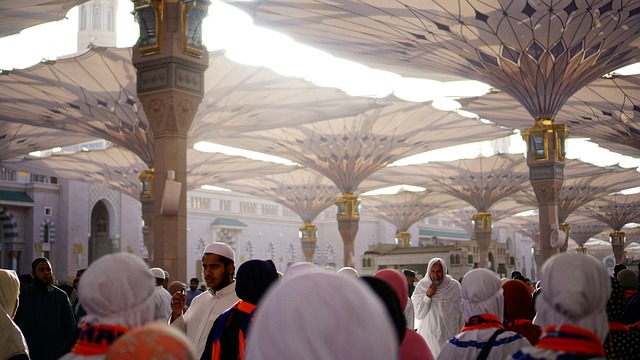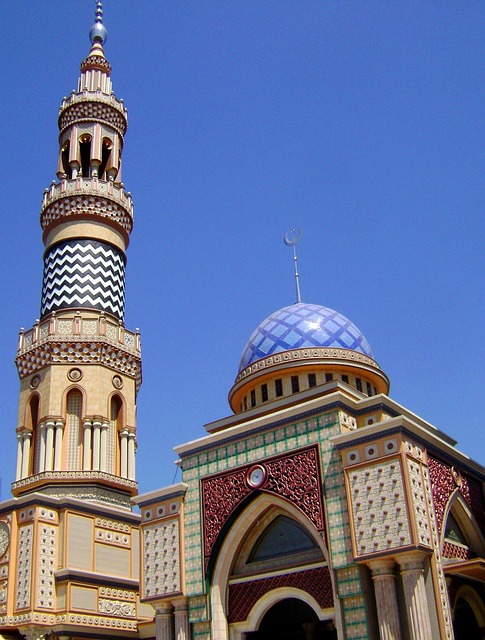The 2025 Hajj pilgrimage offers Romania a significant economic opportunity, with high demand for its Hajj packages expected to drive substantial tourism growth. By catering to pilgrims' needs, local businesses can thrive, create jobs, and foster community development. Effective resource management and sustainable tourism strategies are crucial to preserve cultural heritage while ensuring long-term economic benefits. Aiming to transform into a modern economy by 2025, Romania's "Romania 2025" strategic plan leverages its rich culture and improves infrastructure to attract diverse tourists, including those seeking Hajj packages from Romania in 2025.
“Explore the profound economic ripple effects that shape local communities in the article, ‘Understanding the Economic Ripple Effect’. We delve into how economic fluctuations impact regional economies, with a focus on tourism’s transformative power. From the success of Hajj packages to Romania’s 2025 development plan, this piece uncovers strategies for sustainable growth. Discover how strategic investments and unique travel experiences can drive local economies forward, fostering thriving communities.”
- Understanding the Economic Ripple Effect: How Local Economies Thrive or Falter
- The Role of Tourism: Unlocking Potential through Hajj Packages and Beyond
- Romania 2025: A Case Study on Sustainable Economic Growth and Its Impact
Understanding the Economic Ripple Effect: How Local Economies Thrive or Falter

The economic impact of events like the Hajj, especially in 2025 with expected high demand for Hajj Packages from Romania, can have a profound ripple effect on local economies. This pilgrimage attracts a massive influx of visitors, significantly boosting tourism and related industries. Local businesses, from hotels to transport services and restaurants, thrive as they cater to these pilgrims’ needs. The increased economic activity leads to job creation, with many locals gaining employment opportunities, fostering community growth and development.
However, the impact extends beyond immediate benefits. The influx of visitors can also strain local resources and infrastructure, requiring efficient management. Well-planned strategies, such as sustainable tourism initiatives, can ensure that the economic gains are long-lasting and positively influence the region’s overall prosperity. For Romania, with its potential to offer unique Hajj packages, this presents a significant opportunity to enhance its economic landscape while preserving cultural heritage for future generations.
The Role of Tourism: Unlocking Potential through Hajj Packages and Beyond

The role of tourism in local economies is profound, especially when it comes to significant events like the Hajj pilgrimage. In Romania, for instance, the potential of Hajj Packages 2025 is immense. As one of the world’s largest annual gatherings, the Hajj attracts millions of Muslims worldwide, presenting a unique opportunity for Romanian cities and businesses to showcase their hospitality, culture, and history. These Hajj packages not only facilitate access to essential services but also contribute significantly to the local economy through increased tourism revenue.
Beyond the direct economic benefits, the Hajj pilgrimage serves as a gateway to fostering cultural exchange and understanding. Tourists from diverse backgrounds stay in local accommodations, frequent restaurants, visit historical sites, and interact with residents. This interaction not only enriches their travel experience but also deepens cultural ties between Romania and other nations. As such, the Hajj Packages 2025 from Romania have the potential to unlock a vibrant tourism sector, leaving a lasting impact on the local economy and community.
Romania 2025: A Case Study on Sustainable Economic Growth and Its Impact

Romania’s ambitious vision for 2025, outlined in its strategic plan “Romania 2025,” presents an intriguing case study on sustainable economic growth and its potential impact on local communities. This national roadmap aims to transform Romania into a modern, competitive economy, attracting foreign investments and fostering innovation. One notable aspect is the focus on developing tourism, including promoting Hajj packages from Romania in 2025, which could significantly boost revenue and create job opportunities.
The country’s diverse landscapes, rich cultural heritage, and improving infrastructure make it an attractive destination for both traditional and niche markets. By leveraging these strengths, Romania aims to achieve sustainable growth while ensuring that local economies benefit directly. This strategy includes supporting small and medium-sized enterprises (SMEs), enhancing digital connectivity, and promoting sustainable development practices. As a result, regions across the country could experience economic revitalisation, leading to improved standards of living for its residents.
The economic ripple effect of local economies is profoundly influenced by both internal factors and external events, with tourism playing a pivotal role. As seen in Romania’s 2025 case study, sustainable economic growth can be achieved through strategic initiatives like the Hajj Packages 2025 from Romania, which not only boost revenue but also enhance the local landscape. Understanding this dynamic is essential for fostering thriving communities and ensuring a prosperous future for local economies.
